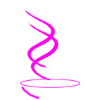TOPIC 2.1.1 | METHODS OF DATA TRANSMISSION |
|
Topics from the Cambridge IGCSE (9-1) Computer Science 0984 syllabus 2023 - 2025.
|
OBJECTIVES
(a)Understand that data is broken down into packets to be transmitted (b) Describe the structure of a packet (c) Describe the process of packet switching |




